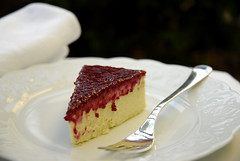 Easter is coming and all I can think is chocolate! I don’t care about the shape, I don’t need a chocolate egg or rabbit; I prefer a simple bar of fine plain chocolate. I know I can have it anytime, but never I feel so much desire for it as I do at this time of the year. First of all I’m an addict and then there’s too much information all over the place, that isn’t fare. Thank God I refined my palate and don’t go crazy on any chocolate I see. Although I sometimes eat some generic stuff and find pleasure and satisfaction in doing it. But sampling some of the best products in the world is a totally different experience. It’s about opening up your senses, discovering new subtle tastes, letting your imagination wander with flavors and go to places like Madagascar, Ecuador and Caribbean and having your whole body feeling amazed by the result of the dedication of people who strive for perfection.
Easter is coming and all I can think is chocolate! I don’t care about the shape, I don’t need a chocolate egg or rabbit; I prefer a simple bar of fine plain chocolate. I know I can have it anytime, but never I feel so much desire for it as I do at this time of the year. First of all I’m an addict and then there’s too much information all over the place, that isn’t fare. Thank God I refined my palate and don’t go crazy on any chocolate I see. Although I sometimes eat some generic stuff and find pleasure and satisfaction in doing it. But sampling some of the best products in the world is a totally different experience. It’s about opening up your senses, discovering new subtle tastes, letting your imagination wander with flavors and go to places like Madagascar, Ecuador and Caribbean and having your whole body feeling amazed by the result of the dedication of people who strive for perfection. A great chocolate starts with the best cocoa beans. There are three main varieties of cacao: Forastero that comprises 95% of the world production of cacao, Criollo, and Trinitario. The highest quality cocoa beans come from the Criollo variety, which is considered a delicacy. Criollo plantations have low yields and tend to be less resistant to several diseases that attack the cocoa plant; therefore very few countries still produce it. One of the largest producers of Criollo beans is Venezuela and the most famous region is Chuao. Chuao is surrounded by mountains and dense rainforests to the south and by the Caribbean Sea to the north, resulting in a perfect microclimate for cacao. And with that Chuao also has centuries-old traditions of harvesting and preparing cacao.
The beans then have to go to the chocolate makers where they are cleaned, roasted, and graded. Next the shells are removed to extract the nib. Finally, the nibs are ground, which releases and melts the cocoa butter producing chocolate liquor. Chocolate liquor is blended with the cocoa butter in varying quantities to make different types of chocolate or covertures. The finest, plain dark chocolate covertures contain at least 70% cocoa (solids + butter), whereas milk chocolate usually contains up to 50%. High-quality white chocolate covertures contain only about 33% cocoa. Then it’s time to take care of the texture of the chocolate by conching and tempering it. The conching process produces cocoa and sugar particles smaller than the tongue can detect, hence the smooth feel in the mouth. The length of the conching process determines the final smoothness and quality of the chocolate. High-quality chocolate is conched for about 72 hours, lesser grades about four to six hours. The final process, which is tempering gives chocolate its uniform sheen and crisp bite.

So which one is the best chocolate? I tasted and liked: Valhona, Michel Cluizel, Voges, Lindt, Scharffen Berger, Callebaut, Neuhaus and Galler. But the list of good chocolate is long and last time I checked everyone was talking about Amadei as being the greatest one. Amadei is produced in Italy with cocoa beans that come from Chuao in Venezuela and a great deal of dedication. For more info about it read this Article.
Also check out those chocolate sites:
70%
Chocosphere
World Wide Chocolate





No comments:
Post a Comment